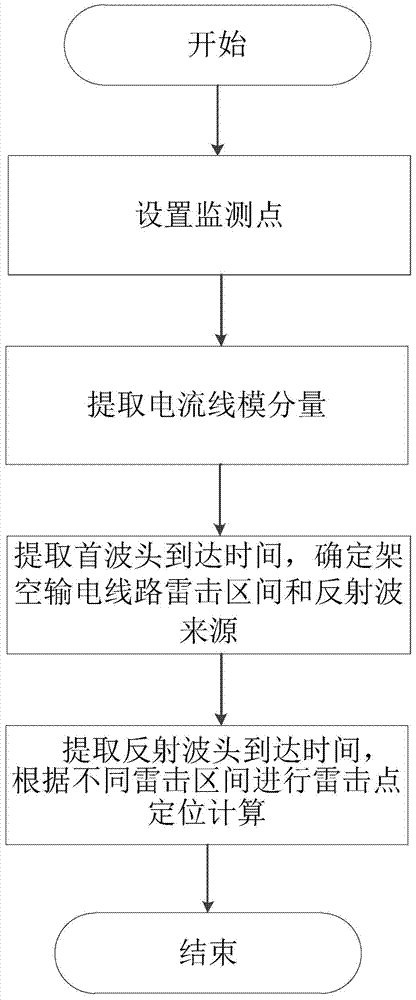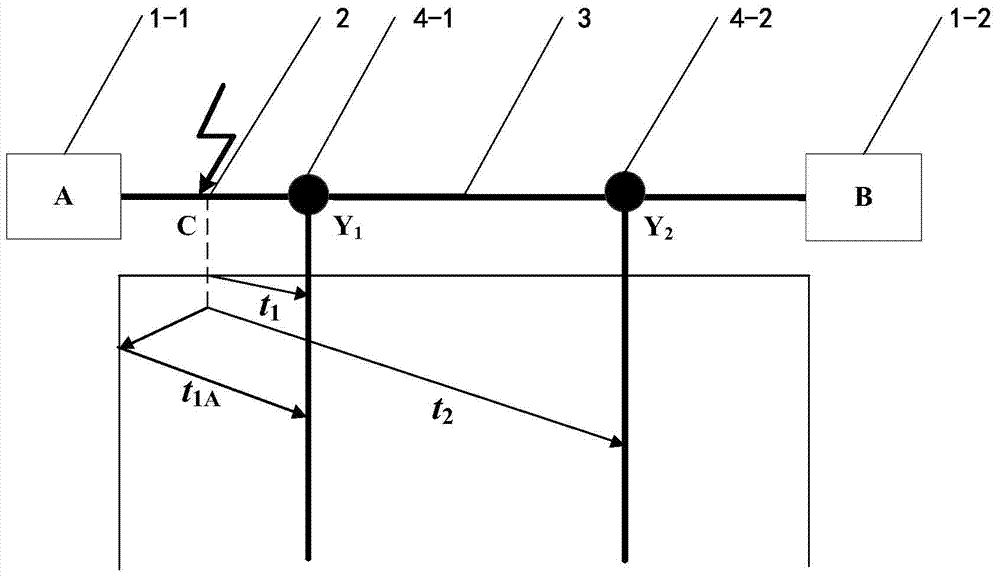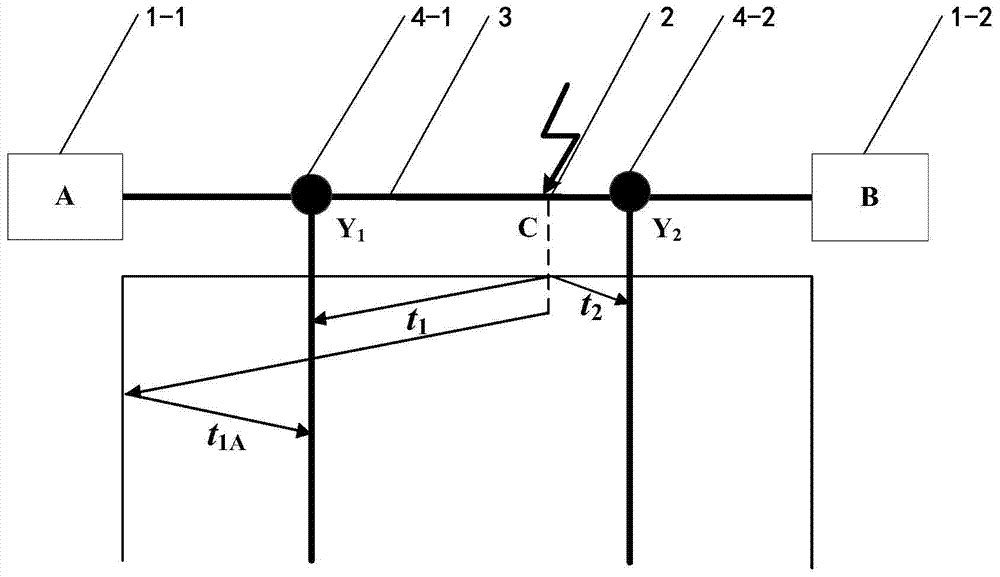Improved power transmission line lightning stroke double-end traveling wave positioning method
A double-ended traveling wave positioning and transmission line technology, applied in the direction of the fault location, etc., can solve the problems of the influence of positioning accuracy, no consideration of attenuation and deformation, and insufficient practicability of the positioning method
- Summary
- Abstract
- Description
- Claims
- Application Information
AI Technical Summary
Problems solved by technology
Method used
Image
Examples
Embodiment 1
[0052] like figure 1 , 2 As shown, taking a 110kV, 60km overhead transmission line as an example, an improved transmission line lightning strike double-terminal traveling wave positioning method, the specific steps of the method are as follows:
[0053] (1) Set monitoring points
[0054] First, set up two monitoring points Y on the overhead transmission line 1 and Y 2 . The two monitoring points Y 1 and Y 2 It is installed at both ends of the overhead transmission line and distributed symmetrically. Each monitoring point Y 1 or Y 2 The average distance from the nearest substation is 10km, and the substation A on the left is set to the monitoring point Y 1 Between is monitoring area 1, monitoring point Y 2 To the right substation B is monitoring area 2, monitoring point Y 1 to monitoring point Y 2 The monitoring area 3 is in between.
[0055] (2) Extract the current line mode component
[0056] After step (1) is completed, set the distance between lightning strike ...
Embodiment 2
[0073] Such as figure 1 , 3 As shown, an improved transmission line lightning strike double-terminal traveling wave positioning method is the same as in embodiment 1, wherein:
[0074] In step (2), set the distance between lightning strike point C and substation A on the left as 42.6km.
[0075] Monitoring point Y 1 The line-mode component of the current at x 1 Calculated as Figure 7 Shown, monitoring point Y 2 The line-mode component of the current at x 1 Calculated as Figure 8 shown.
[0076] In step (3), use wavelet transform to extract monitoring points Y respectively 1 and Y 2 The line-mode component of the current at x 1 Arrival time of the first wave in the medium, that is, t 1 109.5μs, t 2 is 25.4μs.
[0077] Then compare the monitoring point Y 1 and monitoring point Y 2 The line-mode component of the current at x 1 The polarity of the first wave head to determine the lightning strike interval: such as Figure 7 , 8 Shown, monitoring point Y 1 and ...
Embodiment 3
[0087] Such as figure 1 , 4 As shown, an improved transmission line lightning strike double-terminal traveling wave positioning method is the same as in embodiment 1, wherein:
[0088] In step (2), set the distance between lightning strike point C and substation A on the left as 57.4km.
[0089] Monitoring point Y 1 The line-mode component of the current at x 1 Calculated as Figure 9 Shown, monitoring point Y 2 The line-mode component of the current at x 1 Calculated as Figure 10 shown.
[0090] In step (3), use wavelet transform to extract monitoring points Y respectively 1 and Y 2 The line-mode component of the current at x 1 Arrival time of the first wave in the medium, that is, t 1 149.6μs, t 2 is 15.9μs.
[0091] Then compare the monitoring point Y 1 and monitoring point Y 2 The line-mode component of the current at x 1 The polarity of the first wave head to determine the lightning strike interval: such as Figure 9 , 10 Shown, monitoring point Y 1 an...
PUM
 Login to View More
Login to View More Abstract
Description
Claims
Application Information
 Login to View More
Login to View More - R&D
- Intellectual Property
- Life Sciences
- Materials
- Tech Scout
- Unparalleled Data Quality
- Higher Quality Content
- 60% Fewer Hallucinations
Browse by: Latest US Patents, China's latest patents, Technical Efficacy Thesaurus, Application Domain, Technology Topic, Popular Technical Reports.
© 2025 PatSnap. All rights reserved.Legal|Privacy policy|Modern Slavery Act Transparency Statement|Sitemap|About US| Contact US: help@patsnap.com



